The wealth and opulence of al-Andalus was remarked upon as early as the 10th century. It was most advanced civilisation in Europe for 700 years.
By Nick Nutter | Updated 11 Apr 2023 | Andalucia | History |
Login to add to YOUR Favourites or Read Later
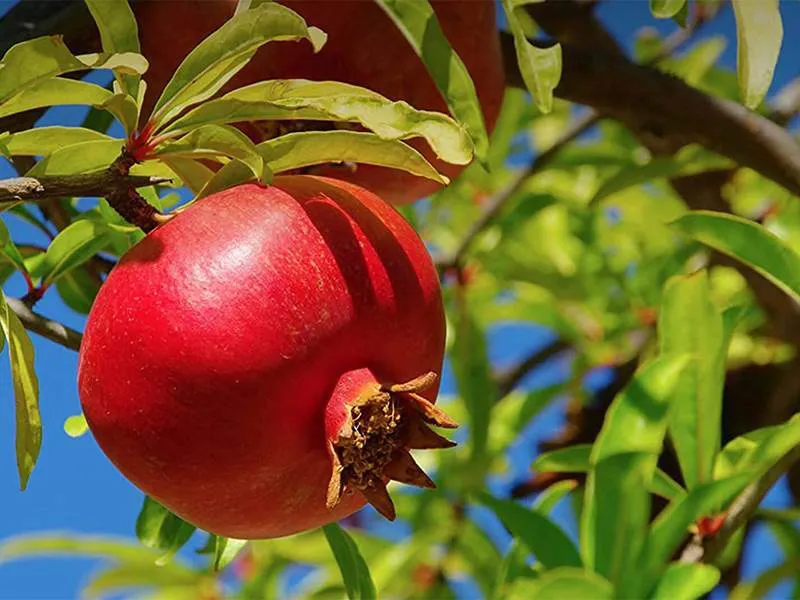
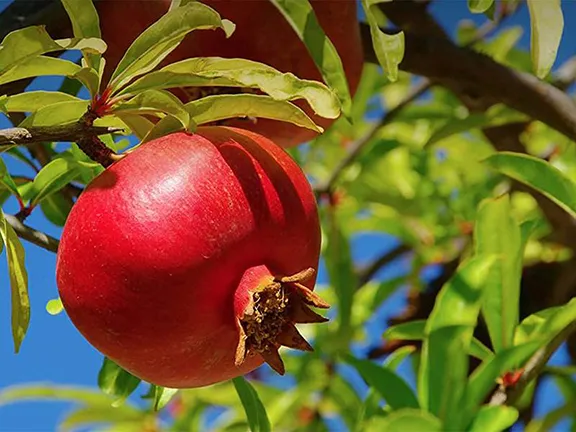
Pomegranate, emblematic of al-Andalus
Trans-Mediterranean trade was a long-established activity when the Moors occupied the Iberian Peninsula, The Phoenicians and Romans had recognised that Hispania was a mineral and agricultural goldmine. Before the invasion in 711 AD, goods from the Iberian Peninsula, precious metals, wine, olive oil, salted fish, salt, sultanas, wheat and wool, were finding their way as far as the Middle East. When the Muslims occupied the Iberian Peninsula they continued this trade, now facilitated by a common language spoken everywhere between the Pillars of Hercules, along the entire North African coast to the Middle East. Muslim thinking from the beginning had encouraged trade and mobility; after all, the Prophet himself had been a merchant and the Qur’an enjoined Muslims to travel and see the wonders of Allah’s creation.
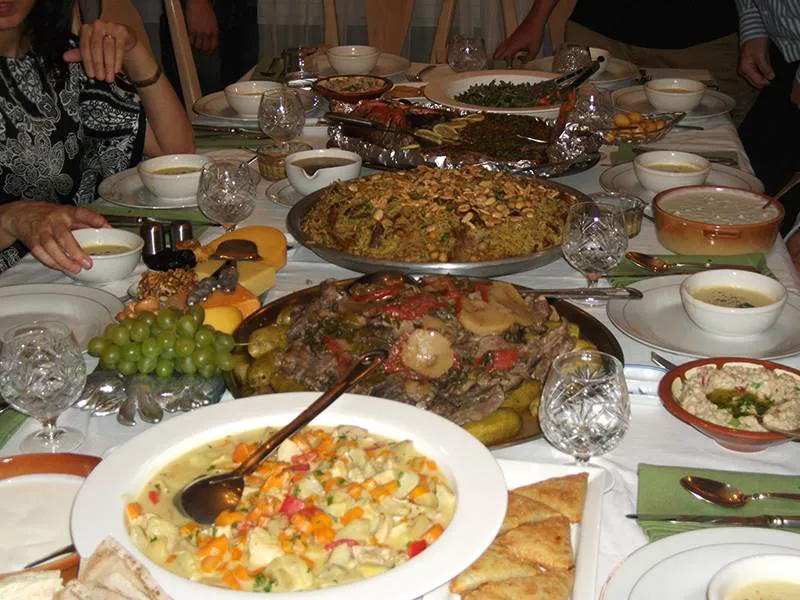
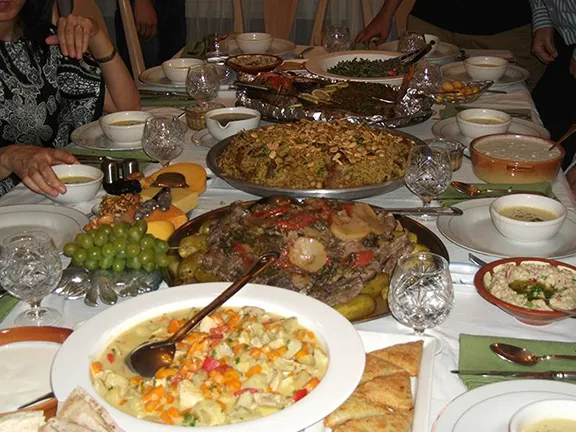
Arabic feast
In addition to the traditional exports, the Muslims encouraged small workshops and cottage industries and soon manufactured products were being shipped east. They included wrought iron, silver goods, glassware, ceramics – including the famous azulejo tiles that are still manufactured, paper goods, woollen textiles, Córdoban leatherwork – still prized today, and silks dyed in brilliant colours. Although manufacturing never reached an industrial scale during this period, it still provided a significant contribution to the coffers of the Arab rulers of al-Andalus.
In return al-Andalus imported goods not easily available in the Iberian Peninsula such as gold from the Upper Niger area, then called Sudan, that became the basis for exchange throughout Europe until gold from the Americas started flooding in during the 16th century, and ivory that was then worked by skilled ivory carvers.
Supporting the manufacturing sector, the agricultural sector that had declined somewhat under Visigothic rule, was revitalised by the Muslims.
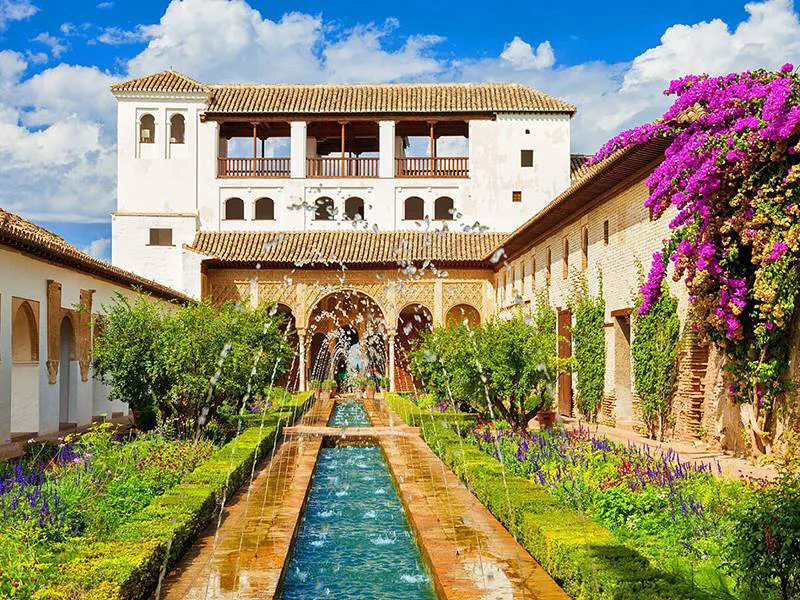
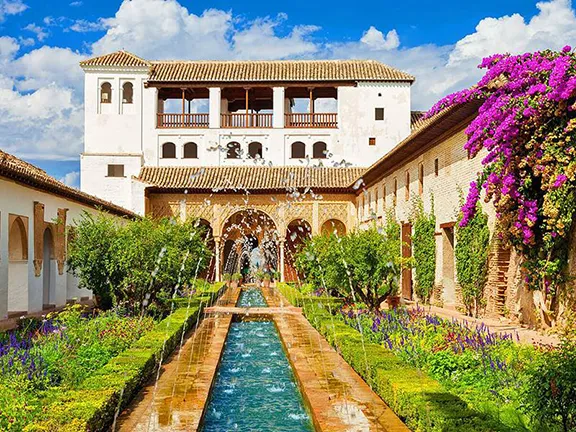
Generalife
The Romans had introduced irrigation to the Iberian Peninsula and it was this framework that the Muslims expanded and improved. Previously arid, barren areas, such as the Cabo de Gata in Almeria or the deserts of Tabernas, were soon dotted by oasis with waterwheels (called norias) drawing water from the depths and pouring it into channels to irrigate allotments. A fine example still exists in working order at El Pozo de Los Frailes in Almeria.
The Muslims were also experts in the use of water mills (aceña) for grinding cereals and for a system of storing water in aljibes, a development of the Roman cisterns. The aljibes in Granada city, indeed hundreds of aljibes throughout Andalucia, are still used today. To conserve water in the mountainous dry areas of al-Andalus, and use the water that descends during the sudden heavy storms to which the south of the Iberian Peninsula in particular is prone, the Muslims encouraged the use of water trapment structures. These are horizontal dams, made from stones and earth, across the narrow gullies that lead off a hillside. A series of dams in the same gulley, with flat cultivated ground between, ensures that the water that does fall, is used economically and does not wash the topsoil into the valleys. They are a common feature, still functioning in Almeria, Murcia and parts of Granada.
The terracing also extended to the sides of the mountains themselves. The idea is that water flows down the irrigation channels at the outer edge of the terrace, then into the channel below and so on, the whole controlled by sluices. The ancient terracing is still evident throughout Andalucia and, in many places is maintained and used today.
It is not surprising that water features large in Arabic gardens and that water had taken on an almost spiritual form in Islamic lore. The tinkle of a flowing stream or the patter of a fountain, to cool the air and induce calm, is the essence of an Arabian landscape.
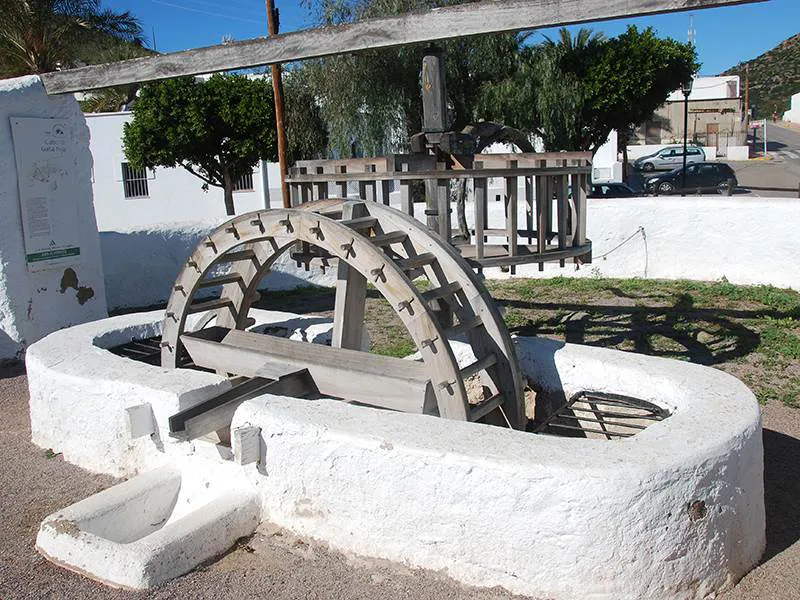
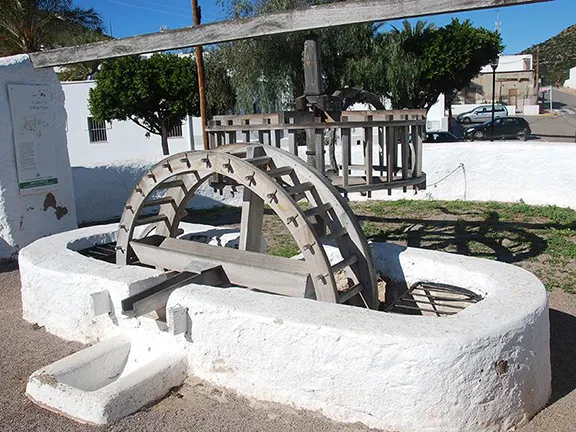
Noria Pozo del Frailes
In addition to opening up previously barren land, the Moors developed agriculture into a science. In the 12th century, for example, Abu Zacaria published a ‘Book of Agriculture’ in which he discusses irrigation, the qualities of edible plants and vegetables, the use of fertilizers, the relationship of animals to the land, the diseases that affected animals, fowl, bees etc., and how to cure them. The valleys of the Almanzora, Segura, Guadiana and Guadalquivir provided fertile ground for the development of these ideas.
Until the Muslims arrived the staple crops in the Iberian Peninsula were wheat, olives, grapes, beans, lentils and chickpeas, a combination little changed since the Neolithic. The Arab rulers of al-Andalus naturally wanted the more exotic fare they had become used to. They introduced fruits: oranges, lemons, limes, grapefruit, watermelons, figs, pomegranates, almonds, bananas, mangos, and apricots; vegetables: artichokes, spinach, aubergines, carrot, parsnip and spices; cinnamon, cloves, nutmeg, cumin, caraway and coriander. It is sometimes difficult to pinpoint just who brought some vegetables, fruits, and spices into the Iberian Peninsula. For instance, the Romans certainly knew about and consumed almonds, figs and lemons but whether they were cultivated in Hispania is unclear. Their introduction is generally attributed to the Muslims.
In addition the Muslims introduced cash crops such as sorghum (dry wheat), cotton, flax, sugar cane and the mulberry tree to feed the silk worms. The last sugar cane factories were still in use until the mid 20th century.
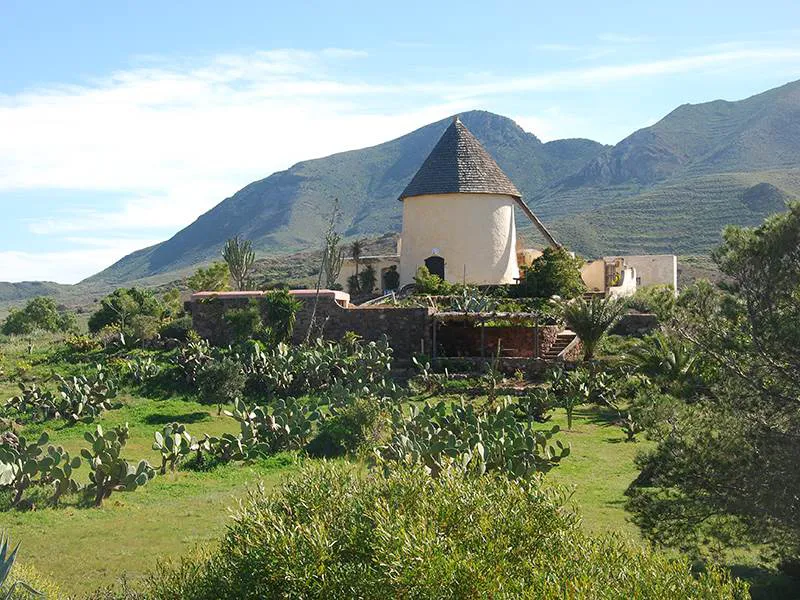
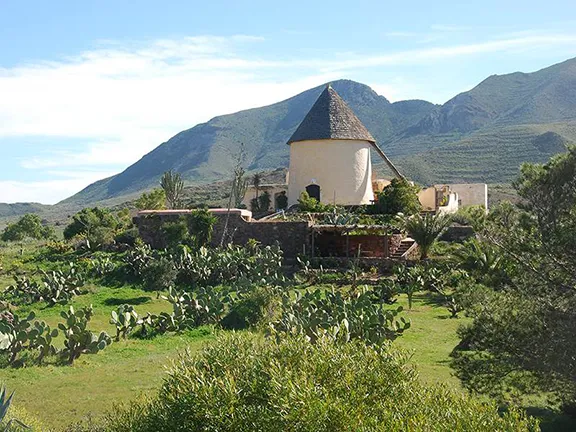
Oasis in the Cabo de Gata
With improved irrigation, fertilisation and the change from biannual land use for crops to annual usage with proper fertilisation, the land became much more productive increasing thereby the prosperity and well-being of the Andalusis. Cities grew thanks to the benefits of a sound economy. People ate a healthier and more varied diet, which in turn allowed for more leisure activities (e.g. to play chess, introduced into al-Andalus in the 10th century, or to create beautiful gardens as sources of aesthetic pleasure or meditation). Andalusi of all origins, Arab, Berber, Hispano-Visigoth and Jews were fond of poetry and prose, sculpture and artworks.
Apart from the splendid and ornate adornments to the interior and exterior of public buildings dating to the period, perhaps the most visually obvious sign of growing opulence are the gardens. The creation of beautiful gardens began during the reign of Abd al-Rahman I (756 – 785 AD) and culminated in the 14th century with the magnificent Generalife gardens in the Alhambra Palace of Granada. Other fine gardens may be seen in the alcazabas of Málaga, Almeria, Antequera, Seville and Córdoba. In the latter city, during the month of May each year, the patios of private residences are thrown open to the public. These beautiful sanctuaries only came into existence as the prosperity of their owners and the availability of time during which to enjoy the courtyards, increased.
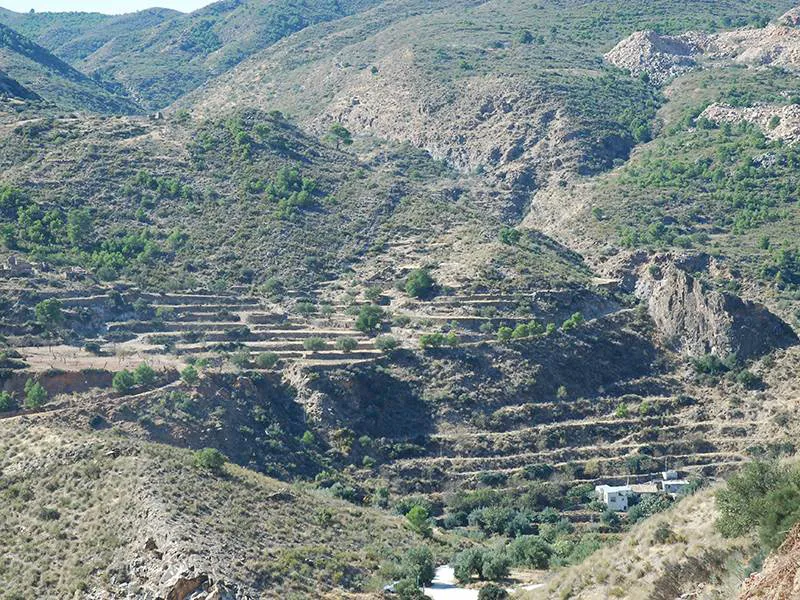
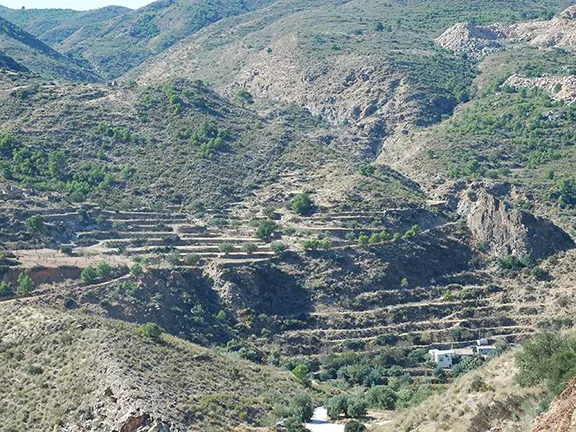
Terracing in Almeria
Another, less visible sign of increased leisure time is how fashions changed in the way food was consumed. The consumption of food was already an art by the 10th century. In the 9th century, Ali ibn Nafi, a famous Persian scholar exiled from the court of the Caliph of Baghdad, arrived in Córdoba. Although renowned as musician, astronomer and geographer, Nafi –or Ziryab as he was better known– is best remembered now as a fashion icon and an arbiter of good taste. He was fastidious about his hygiene advocating short haircuts, clean finger nails and the use of underarm deodorant and toothpaste.
Ziryab also introduced the concept of serving a meal in courses, soup, hors d’oeuvres, then fish, meat and desserts of fruit, nuts or compote, rather than one course heaped on the plate. Delicate glassware and elegant crockery replaced the solid gold or silver goblets and heavy ceramics. He established a glass factory at Córdoba to promote his ideals and add another epitaph to his name, entrepreneur.
Clothing was obviously important to Ziryab. He began the fashion of wearing different styles according to the seasons: light silk robes and bright colours for the spring, white for the summer and quilted gowns or furs for the winters.
Ali ibn Nafi became the Emily Post of the Islamic world.
Despite the religious differences between the Islamic world of al-Andalus and the Christian, Catholic world of the remainder of Europe, the many scholars and pupils that visited the great cities in al-Andalus, not to mention the first tourists, returned to their homelands influenced by the opulence and cultures they had witnessed and many of those influences are still evident. It is normal in Europe for meals to be served in courses, although the content of those courses varies from country to country. Within Andalucia in particular, at one time the last rump of al-Andalus, the cuisine still has a very Arabic flavour. Those flavours continue to become embedded in the cuisines of other countries, spread by tourists these days rather than students. Agricultural processes developed by the Muslims have been adopted all over the world simply because they work.
The wealth of al-Andalus was remarked upon as early as the 10th century by the Jewish scholar, diplomat and physician to Abd al-Rahman III, Hasdai ibn Shaprut; ‘The land is rich, abounding in rivers, springs, aqueducts; a land of corn [corn was a generic name for all cereal crops], oil and wine, of fruits and all manner of delicacies; it has pleasure gardens and orchards, fruitful trees of every kind, including the leaves of the trees upon which the silkworm feeds…. There are also found among us mountains … with veins of sulphur, porphyry, marble and crystal. Merchants congregate in it and traffickers from the ends of the earth … bringing spices, precious stones, splendid wares for kings and princes….’
By the 10th century, Córdoba had become the largest city in Europe, with a population of approximately 100, 000. It was a sophisticated magnate attracting people from Europe and all corners of the Mediterranean. Its nearest rival was Seville that was, briefly, the capital of al-Andalus during the Almoravid and Almohad dynasties. As al-Andalus contracted, Granada came into eminence. Ibn Ahmar and his descendants, known as the Nasrid dynasty, ruled the kingdom of Granada for several centuries. Throughout their reign, Muslim and Jewish refugees — from cities conquered by Christians — flocked to Granada. This land was the last remaining Muslim kingdom on the Iberian Peninsula yet commerce continued unabated from the ports of Almeria the ‘Mirror of the Sea’, Málaga and Adra.
Further reading and references
Barton, Simon A History of Spain Basingstoke, Hampshire 2004
Collins, Roger Early Medieval Spain: Unity in Diversity 400-1000 Basingstoke, Hampshire 2nd. ed. 1995
Fletcher, Richard Moorish Spain London 1994
Fletcher, Richard The Quest for El Cid London 1989
Gerber, Jane S The Jews of Spain: A History of the Sephardic Experience New York 1992
Postan, Michael M The Cambridge Economic History of Europe: The Agrarian Life of the Middle Ages Cambridge 2nd. ed. 1966 (1st ed. 1941)
Reilly, Bernard The Contest of Christian and Muslim Spain 1031-1157 Oxford 1995